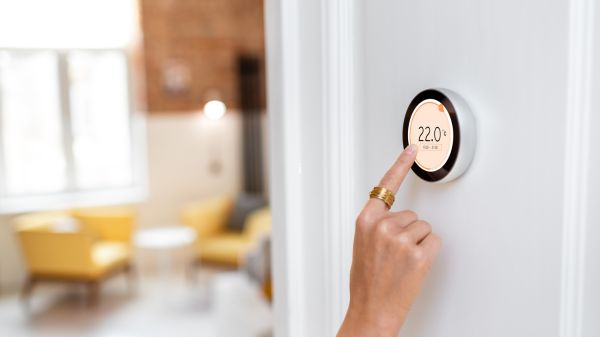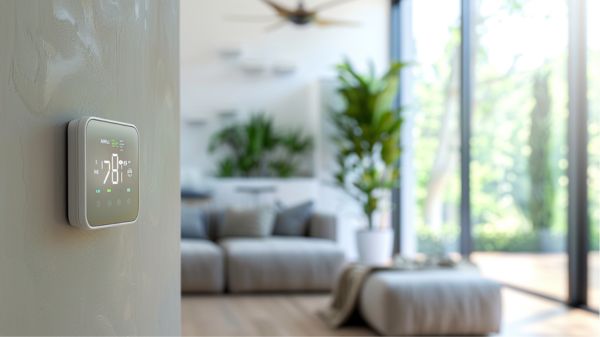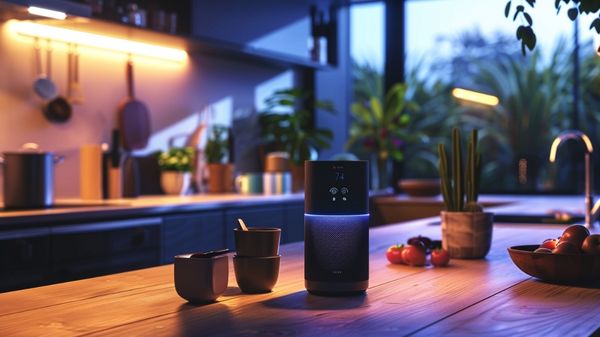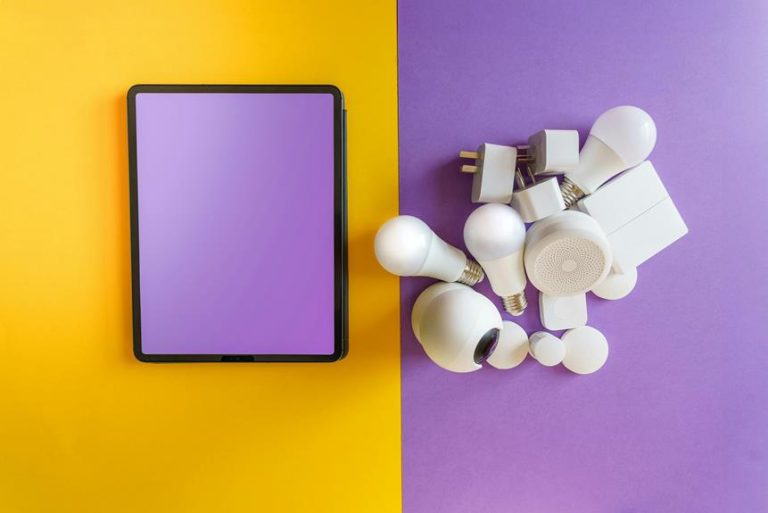As urban populations continue to grow, the quest for energy efficiency within apartment living becomes increasingly essential. Many residents are unaware of the simple yet effective strategies to reduce electric bill in their apartment that can greatly curtail their electric bills.
These range from optimizing HVAC settings to upgrading to energy-efficient appliances and utilizing natural light. By adopting these methods, not only can one enjoy a reduction in monthly expenses, but also contribute to a broader environmental impact.
The question then arises: what are some of the overlooked practices that could further enhance these savings? Let us explore the possibilities together.
Key Takeaways
- Set your thermostat to 78°F during cooling seasons to save on HVAC costs.
- Upgrade to Energy Star certified appliances for at least 20% reduction in energy usage.
- Utilize natural light and keep electric lights off during the day to cut costs.
- Install smart power strips to automatically cut off phantom power to unused electronics.
Optimize Air Conditioning Settings
To effectively reduce your electric bill, set your thermostat to the highest comfortable temperature, around 78°F, during the cooling season to save up to 10% on cooling costs for each degree you set above 72°F. Adjusting your temperature settings in this way not only lowers your energy consumption but also promotes an eco-friendlier living environment.
Incorporating ceiling fans into your cooling strategy can further optimize these energy savings. Ceiling fans enhance air circulation, enabling you to raise the thermostat settings by an additional 4°F without a noticeable decrease in comfort. This synergy between thermostat settings and ceiling fans effectively reduces reliance on your HVAC system, consequently lowering cooling costs.
To maximize the efficiency of your air conditioning, confirm that your HVAC system is regularly maintained. A well-maintained HVAC system can operate up to 15% more efficiently, which greatly curtails energy consumption and costs.
Regular maintenance checks can identify and resolve issues such as duct leakage or inefficient components, which otherwise compromise the system’s efficiency.
Upgrade to Energy-Efficient Appliances
Switching to Energy Star certified appliances can offer significant reductions in energy usage and cost. For example, certified refrigerators consume 15% less energy than standard models.
When selecting new appliances, prioritize those that are highly efficient in both energy and water use. Front-loading washing machines, for instance, can save up to 50% on energy and 40% on water.
Regular maintenance of these appliances guarantees they continue to operate at peak efficiency, further driving down electricity costs over time.
Energy Star Certified Benefits
Upgrading to Energy Star certified appliances can reduce energy usage by at least 20%, resulting in considerable savings on your electric bill and a positive impact on the environment. Energy Star certified appliances are designed to minimize energy and water usage, thereby helping you save money on utility bills while promoting environmental sustainability. For example, replacing an old refrigerator with an Energy Star model could save about $200 annually in energy costs.
These energy-efficient appliances operate more effectively than traditional models, reducing energy costs without sacrificing performance. By choosing Energy Star certified products, you are not only ensuring energy efficiency but also supporting industry innovations that prioritize eco-friendly solutions.
Specifically, Energy Star dishwashers and front-loading washing machines use considerably less water compared to standard models—about 50% less in the case of washing machines. This reduction in water usage further contributes to lower utility bills and aids in water conservation efforts, an essential aspect of environmental sustainability.
Investing in these appliances translates to long-term savings and helps reduce your carbon footprint. As utility costs continue to rise, the initial investment in Energy Star certified technology proves economical, offering a dual benefit of saving money and protecting the planet.
Choosing Efficient Appliances
Opting for energy-efficient appliances is an essential step towards reducing your home’s overall energy consumption and achieving substantial savings on your electric bill. When you choose appliances that are designed to use less energy, you not only cut costs but also contribute to environmental conservation.
By investing in appliances with the Energy Star certification, you can guarantee that each device operates with peak efficiency. Here are key considerations when selecting energy-efficient appliances:
- Energy Star Certified Products: Always look for the Energy Star label when purchasing new appliances. This certification means the product meets strict energy efficiency guidelines set by the U.S. Environmental Protection Agency.
- Front-Loading Washing Machines: Opt for front-loading models, which use considerably less water and energy than traditional top-loaders.
- Efficient Dishwashers: Choose dishwashers with energy-saving wash cycles and no-heat drying options to maximize energy savings and reduce water usage.
Maintenance for Efficiency
Regular maintenance and timely upgrades to energy-efficient appliances play a key role in maximizing your household’s energy conservation and cost savings.
Embracing appliances that meet Energy Star certifications can greatly reduce your electricity bills, as these appliances are designed to lower energy consumption by 10-50% compared to standard models.
For instance, consider the advantages of energy-efficient dishwashers, which use only about 3 gallons of water per cycle, far less than the 10-15 gallons required for hand washing. This not only cuts down on water costs but also on the energy used to heat that water.
Moreover, switching to front-loading washing machines can be a smart choice; these machines use approximately 40% less energy and 50% less water than their top-loading counterparts. Such upgrades are essential for those looking to enhance energy savings and reduce utility expenses effectively.
Additionally, replacing incandescent bulbs with energy-efficient light bulbs like LEDs or CFLs can save up to $225 over the bulbs’ lifetime due to their 80% lower energy usage.
Maximize Natural Light Usage
To effectively reduce your electric bill, consider enhancing your window treatments and rearranging your interior layout to maximize natural light.
Opting for light-colored or reflective curtains and blinds can increase the distribution of sunlight within your space, decreasing the need for electric lighting during the day.
Additionally, strategically positioning furniture away from windows can allow for deeper penetration of natural light, further minimizing your reliance on artificial lighting and contributing to energy savings.
Enhance Window Treatments
Why not enhance your window treatments to maximize natural light and reduce electricity costs? By optimizing how your windows manage light and heat, you can greatly cut down on your reliance on artificial lighting and air conditioning, creating a more energy-efficient living space.
Here are some smart, eco-friendly strategies to take into account:
- Opt for Light-Colored or Reflective Treatments: These window treatments can diffuse natural light effectively while minimizing heat gain during warmer months, helping to keep your home cooler without extra cooling costs.
- Install Sheer Curtains or Blinds: Such options allow for privacy without sacrificing the benefits of natural light. They brighten your space naturally, lessening the need for artificial lights during the day.
- Apply Window Films: These films can block harmful UV rays, protecting your furniture from fading and reducing the load on your cooling system by preventing excessive heat gain.
Implementing these tips not only promotes a sustainable lifestyle but also enhances the aesthetic and comfort of your living space, all while keeping electrical costs down.
Rearrange Interior Layout
Building on the idea of enhancing window treatments, rearranging your interior layout to maximize natural light can further reduce your need for artificial lighting and decrease electricity costs. By strategically positioning furniture and using reflective window treatments, you can enhance the penetration of natural light into your space.
This shift not only promotes an energy-efficient lifestyle but also taps into the health benefits of increased sunlight exposure. Let’s consider practical steps and their impacts:
| Strategy | Impact on Lighting Costs |
|---|---|
| Use reflective window treatments | Increases light dispersion |
| Place mirrors strategically | Amplifies natural light reach |
| Keep curtains/blinds open | Maximizes sunlight utilization |
| Rearrange furniture | Reduces reliance on artificial lighting |
Using light-colored curtains or blinds can reflect more sunlight into your apartment, reducing the need for overhead and artificial lighting during the day. Strategically placed mirrors can effectively double the natural light in darker corners, which not only saves energy but also enhances the perceived space within your home.
Implementing these changes not only helps in reducing electricity costs but also supports a sustainable living environment by minimizing energy consumption. This approach to using natural lighting is not just about cost-saving; it’s a step towards a more eco-friendly and healthier lifestyle.
Unplug Unused Electronics
Turning off and unplugging unused electronics can greatly reduce your home’s energy consumption, saving up to 10% on utility bills by eliminating phantom power draw. This simple yet effective practice helps in not only reducing your electricity bills but also in fostering energy-efficient habits that contribute to a sustainable environment.
Here are practical steps to integrate this habit into your daily routine:
- Audit Your Devices: Regularly check which devices are rarely used and could be unplugged, especially those that remain on standby like TVs and desktop computers.
- Use Smart Power Strips: These strips can cut off power to multiple devices simultaneously when not in use, helping to reduce phantom power effortlessly.
- Unplug Chargers: Chargers for phones, laptops, and other electronics often consume power even when not connected to their device. Make it a habit to unplug these as soon as charging is complete.
Adopting these habits can markedly impact your electricity consumption and promote a more eco-friendly home.
Implement Smart Lighting Practices
Implementing smart lighting practices is a straightforward way to cut your electric bill considerably.
By adopting energy-efficient bulbs such as LEDs or CFLs, you can save up to 75% on the lighting portion of your energy expenses.
Additionally, maximizing the use of natural light during the day can further reduce reliance on artificial lighting, offering substantial cost savings and environmental benefits.
Adopt Energy-Efficient Bulbs
Adopting energy-efficient bulbs, such as LEDs and CFLs, not only reduces electricity consumption by up to 75% but also considerably lowers annual energy costs for households. Shifting from traditional incandescent bulbs to LEDs or CFLs is a pivotal move towards achieving sustainable energy use in your home.
Here are some practical steps to enhance your lighting efficiency:
- Replace all incandescent bulbs: Begin by replacing your old incandescent bulbs with LED bulbs, which not only use less energy but also last markedly longer, reducing the frequency and cost of replacements.
- Utilize dimmers and timers: Integrate dimmers and timers with your LED or CFL bulbs to control the brightness according to your needs and automate lighting based on time of day or room occupancy, further cutting down on unnecessary energy use.
- Regular maintenance: Confirm all your light fixtures are regularly checked and that burnt-out bulbs are immediately replaced with energy-efficient models to maintain peak lighting efficiency.
Utilize Natural Illumination
Harnessing natural light through strategic window management can markedly trim electric bills by reducing dependence on artificial lighting. Opening curtains and blinds during daylight hours harnesses the full potential of natural light, lessening the need for electric lights and potentially saving up to 15% on lighting costs.
To enhance this effect, consider installing light-colored or reflective window treatments that distribute sunlight more effectively throughout your apartment. Furthermore, rearranging furniture to avoid blocking windows allows for deeper penetration of sunlight, optimizing daytime lighting while reducing reliance on energy-consuming artificial sources.
For those willing to invest in more significant modifications, installing skylights or enlarging existing windows can drastically increase natural illumination, further slashing the need for artificial lighting and contributing to lower electric bills.
To complement the use of natural light, incorporating energy-efficient practices like installing dimmers and timers can fine-tune the use of artificial lighting. These devices adjust the brightness based on the time of day, ensuring that lighting is not only efficient but also sufficient for your needs without wasting energy.
Adjust Water Heater Settings
Adjusting your water heater’s temperature to 120°F from 140°F can reduce energy costs by up to 22% and lower the risk of scalding. This simple adjustment not only saves money on your utility bill but also improves the efficiency and longevity of your water heater.
By managing the temperature settings, you reduce the energy required to maintain hot water, thereby decreasing overall energy consumption in your apartment. Consider these practical steps to enhance your water heater settings further:
- Insulate the Water Heater and Pipes: Minimize heat loss by insulating your water heater and the first few feet of accessible hot and cold water pipes.
- Use Lower Temperature Settings for Washing: Opt for cold or warm water when doing laundry or handwashing, which greatly cuts down on energy use.
- Regular Maintenance: Schedule routine check-ups to confirm your water heater is operating at peak efficiency. This can identify and rectify any potential issues like sediment build-up or inefficiencies.
Implementing these measures can lead to considerable savings and contribute to a more sustainable living environment.
Maintain HVAC Efficiency
Maintaining your HVAC system’s efficiency is essential for reducing energy consumption and lowering monthly utility bills. A straightforward method to maintain efficiency is to regularly change or clean HVAC filters every 1-3 months, potentially improving system efficiency by up to 15%. This not only guarantees better airflow but also greatly reduces energy consumption.
Setting your thermostat to a higher temperature when the apartment is unoccupied can also yield considerable savings. Since heating and cooling can constitute 32-45% of your utility expenses, this adjustment is important.
Integrating programmable or smart thermostats can automate this process, adjusting temperatures based on your schedule and presence, leading to improved energy management and further reductions in bills.
Furthermore, annual maintenance checks are necessary. These not only help in identifying and resolving potential issues early but also confirm that the HVAC system operates at peak performance, avoiding unexpected repairs that can be costly.
Additionally, sealing air leaks around windows and doors prevents the loss of conditioned air, thereby enhancing the system’s efficiency and further lowering energy bills.
Utilize Energy Monitoring Tools
Implementing energy monitoring tools allows you to track your electricity usage in real-time, giving you the power to identify and manage the consumption of high-energy appliances effectively.
These tools are essential for anyone looking to reduce costs and achieve energy-saving goals in an eco-friendly manner. By offering a granular view of where and how electricity is used, they empower you to make informed decisions that can lead to significant savings.
Key benefits of using energy monitoring tools include:
- Real-Time Consumption Data: Track your electricity consumption continuously to promptly identify devices that use excessive power.
- Insights on Individual Appliances: Use smart plugs to determine the specific energy usage of appliances, helping you pinpoint energy vampires.
- Trend Analysis: Review historical data through monitoring apps to understand consumption patterns and set achievable energy-saving goals.
Seal and Insulate Spaces
After exploring how monitoring tools can optimize your energy usage, consider enhancing your home’s efficiency by sealing and insulating spaces to further reduce your electric bill. Sealing and insulating are key steps in creating an energy-efficient home environment that reduces heat loss and lowers energy bills.
Start by addressing drafts around windows and doors using caulking and weatherstripping. These simple, low-cost measures can help seal against air leakage, preventing both hot and cold air from escaping. This effort alone can reduce heating and cooling costs by up to 20%, promoting a more stable indoor temperature year-round.
Additionally, investing in thermal curtains for your windows can substantially insulate your rooms. These curtains work by blocking external temperatures, either cold or heat, from entering through the windows, potentially reducing energy loss by up to 25%.
Here is a quick overview of the benefits:
| Improvement Area | Potential Savings |
|---|---|
| Caulking & Weatherstripping | Up to $250 annually |
| Thermal Curtains | Reduce energy loss by 25% |
| Attic & Wall Insulation | Average 15% on energy bills |
Regular checks and updates to your apartment’s insulation in attics and walls can also lead to significant savings, ensuring that insulation materials are continuously performing at their best.
Adopt Energy-Saving Habits
Shifting to energy-saving habits is a practical step toward considerably reducing your electric bill while promoting environmental sustainability. By integrating simple practices into daily routines, you can greatly cut down on costly energy consumption and contribute to a healthier planet.
Here are key habits that make a substantial impact:
- Turning off lights: Make it a habit to turn off lights in unoccupied rooms and maximize the use of natural daylight, which doesn’t just save energy but also reduces your apartment’s electric costs.
- Unplug appliances: Disconnect appliances and chargers when not in use to eliminate phantom energy drains that can inflate your bill by as much as 10%.
- Energy-efficient bulbs: Replace traditional bulbs with energy-efficient LEDs to save approximately $225 per year and enjoy longer-lasting lighting solutions.
Adopting these habits doesn’t just promise a reduction in your monthly bills; it also sets a foundation for sustainable living practices that benefit both you and the environment.
Frequently Asked Questions
How Can I Reduce the Energy Cost of My Apartment?
To reduce apartment energy costs, consider investing in energy-efficient appliances, LED lighting upgrades, and smart home technology. Enhance thermal insulation, adopt energy-saving habits, utilize off-peak usage times, explore renewable energy sources, and compare utility provider options.
What Takes up the Most Electricity in an Apartment?
Heating and cooling systems dominate apartment electricity usage, followed by water heating. Appliances like refrigerators and electronics in standby mode also greatly contribute, alongside lighting and cooking appliances, impacting overall energy consumption.
What Are the Extreme Ways to Lower Your Electric Bill?
To drastically lower your electric bill, consider installing solar panels, upgrading to energy-efficient appliances, using smart thermostats, and incorporating LED lighting. Additionally, conduct energy audits and utilize smart power strips to minimize wastage.
What Strategies Can You Use to Reduce Your Electricity Bill?
To reduce your electricity bill, invest in energy-efficient appliances, use smart home technology, and install LED lighting. Manage thermostats wisely, utilize natural light, employ power strips, make seasonal adjustments, and compare electricity providers.
Conclusion
To sum up, adopting these strategic measures can substantially decrease electricity costs in an apartment setting. By integrating energy-efficient appliances, optimizing HVAC systems, and utilizing natural light, residents can achieve significant savings.
Sealing leaks and insulating spaces further enhances energy conservation. Monitoring tools provide valuable insights into energy usage, enabling informed decisions.
Collectively, these practices not only reduce expenses but also contribute to environmental sustainability, aligning with eco-friendly goals and promoting a sustainable lifestyle.




